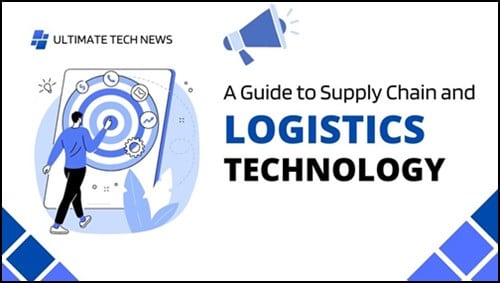
Technology plays a large role in today’s supply chain and logistics industries. It is used to track inventory, manage deliveries, and optimize processes. It is also used to improve communication and collaboration between different parts of the supply chain, and as the use of technology continues to grow, so too will the efficiency and accuracy of supply chain and logistics operations. For now, let’s run through some of the most common technologies that are enabling the big developments that we’ve just outlined.
Radio Frequency Identification
RFID technology is used to identify and track objects, often in real time. RFID tags are small electronic devices that can be attached to or embedded in objects. The tag contains a microchip and an antenna. When the tag comes within range of a reader, the tag’s unique identification number is read by the reader and transmitted to a computer system. RFID tags can be used to track items as they move through the supply chain, from suppliers to retailers and customers. They can also be used to track inventory levels and movement within warehouses and distribution centers. Ultimately, this technology can improve efficiency and reduce overall costs by improving inventory management and tracking processes going forward.
Global Positioning Systems
GPS has become part of our everyday lives. We use it for navigation when driving and walking. We use it to track our fitness progress and it’s what gets us out of a pickle when we get lost in unfamiliar places. What you may not realize is that GPS is also a powerful tool for supply chain and logistics professionals. It can help you optimize your supply chain by providing real-time updates on traffic conditions, weather conditions, and inventory levels. When coupled with the installation of dash cams and a fully functioning fleet management software system, you’ll have a much better insight into what’s going on in the drivers’ seats in your vehicles. Use this data to prevent false claims, improve driver behavior, reduce accidents, and determine how best to route your shipments.
Barcodes: Linear or Two-dimensional
Barcodes come in two different types: linear barcodes and two-dimensional. Linear barcodes are the more common type, and they are found on products such as grocery items. Two-dimensional barcodes, also known as QR codes, are used more often in industrial and logistic settings. They can encode more data than linear barcodes and can be read by more types of scanners.
Electronic Data Interchange
In supply chain and logistics, EDI (electronic data interchange) is a process of exchanging business documents between companies electronically. This can include purchase orders, invoices, shipping notices, and other documents related to the flow of goods. EDI is often used to automate the exchange of information between companies, which can save time and reduce the need for manual handling. It also helps to ensure that data is transferred accurately and in a timely manner. There are a number of different EDI standards that can be used, depending on the type of document being exchanged and the businesses involved.
Leave a Reply
You must be logged in to post a comment.